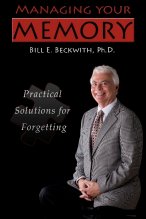I was invited to participate in a panel discussion at Avow Hospice. The theme was “what are the three things that you want all of your clients to know.” This is an interesting challenge for two reasons. First, each panel member has only ten minutes to make their point, Second, as I have recently turned 70 and am rapidly approaching retirement, what do I need to know for myself as I am not immune to the complex cognitive and physical changes that accompany both normal, true senior moments, and abnormal aging, memory and physical loss.
1. We do not yet know what causes Alzheimer’s disease. A recent issue of the ARRP newsletter states that the problem is a lack of research funding. But the issue is more complex. Where do we put the money? Amyloid treatments are a bust despite the fact that amyloid theories have caused mass tunnel vision within the scientific and medical community. We need a paradigm shift. The good news is that Alzheimer’s disease gives advanced warning so we can make plans to have a good life in the face of future memory loss. Furthermore, not everyone with the pathology of Alzheimer’s disease becomes demented and not everyone with dementia has Alzheimer’s disease.
2. The key to treatment of Alzheimer’s disease is short-term memory. There are slowly progressing changes in the ability to learn new information or skills that unfold over the course of a decade before dementia (read as disability) sets in. There is adequate time to strategically plan both to compensate for memory changes and for a higher quality of life for those who are forgetful as well as those who live with them. Make your life plan before you forget that you forget.
3. Treating short-term memory loss requires planning how to remember – the One Minute Rule. Simply, anything given less than one minute of thought will fade from your memory. Moreover, the more minutes you spend the better you will remember something. Quit trying to remember. Plan on how you will remember. A well-placed Post-it note trumps a good intention. Write things down in an organized way. Live by your calendar that contains both what you love to do and what you have to do. Organize your memory tools. The time and effort pays off.
Plan to have a good life even if you don’t remember it.




